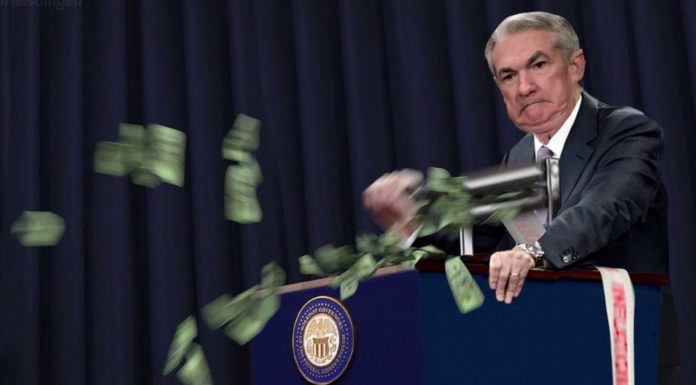(Money Metals Exchange) As Congress sought answers from Federal Reserve chairman Jerome Powell this week, investors are seeking buying opportunities in oversold markets.
Fed chairman Jay Powell was grilled by lawmakers on the hot topic of inflation during testimony Wednesday and Thursday. Powell actually admitted that the Fed got it wrong when it came to expecting inflation to be transitory. But he denied that the Fed’s massive expansion of the currency supply is a major contributor to rising prices.
Powell’s attempts to skirt blame were shut down by Representative Blaine Luetkemeyer:
Jerome Powell: So most overwhelmingly, most economists would not think of it in terms of money supply, but would think of it in terms of supply and demand. And although there may be a role for money supply, they would think in terms of supply and demand being out of balance and that’s how I think about it.
Rep. Luetkemeyer: The definition of inflation I’ve always had was too many dollars chasing too few goods and services.
Powell was also taken to task over the Fed’s contribution to inflation by Louisiana Senator John Kennedy:
Sen Kennedy: The United States Congress, in addition to its regular budget, has spent $7 trillion. I’m not saying all of it was unnecessary. On top of that, the Fed increased its balance sheet from $1.5 trillion dollars to $9 trillion. $9 trillion. I know you’re cutting it back, but we’ve injected all of this money into the economy, and then people go, “Well, we have inflation.” Duh.
Central bankers and politicians who try to dodge responsibility for inflation are counting on people to be very short sighted when it comes to the causes of rising prices. It’s true that supply and demand dynamics that affect prices over any given economic cycle can be tied to a host of things ranging from war to the weather.
President Joe Biden continues to blame Vladimir Putin for inflation even as the Biden administration launched a broad new war on oil and gas producers and showered the public with a more than a trillion dollars in new giveaways shortly after taking office. As Chairman Powell himself acknowledged, the inflation rate was already surging to a multi-decade high before Putin launched his invasion of Ukraine.
Gasoline prices are certainly susceptible to heightened volatility due to international conflict. But there’s a singular reason why gas prices are ranging between $3.00 and $6.00 per gallon this year instead of between $1.00 and $2.00 like they were during the energy shock of the early 1980s. That reason is that the currency has lost two thirds of its purchasing power over the past 40 years.
In any given year, the depreciation of the dollar isn’t necessarily reflected in a particular asset market. Some years, for example, may see home prices surge at the same time as gold prices dip. Other years may see gold outshine all the other major asset classes.
But over a period of many years, the gold market will tend to reflect the dollar’s purchasing power losses – which of course are directly related to the ever-rising supply of dollars.
Gold doesn’t have more intrinsic value today at over $1,800 an ounce than it did 40 years ago at $400 an ounce. It’s the currency in which gold prices are denominated that has changed in value.
The U.S. fiat dollar will continue to lose value even if the Fed manages to get the inflation rate down. Policymakers will never allow all the price level increases that have been built into the economy to date to reverse. That would amount to deflation – something central bankers fear more than anything else.
The only question is where the inflation will show up next. Stocks, housing, and energy markets have each had their big runs since the Fed flooded the economy with emergency liquidity in 2020. Precious metals markets did get a post-COVID boost, but they have lagged behind other asset classes since inflation became a front-page story.
As the headlines shift toward concerns about a recession, gold and silver can be expected to start outperforming economically sensitive assets. Yes, the metals will eventually have their moment to shine as they always do when the dollar declines.



